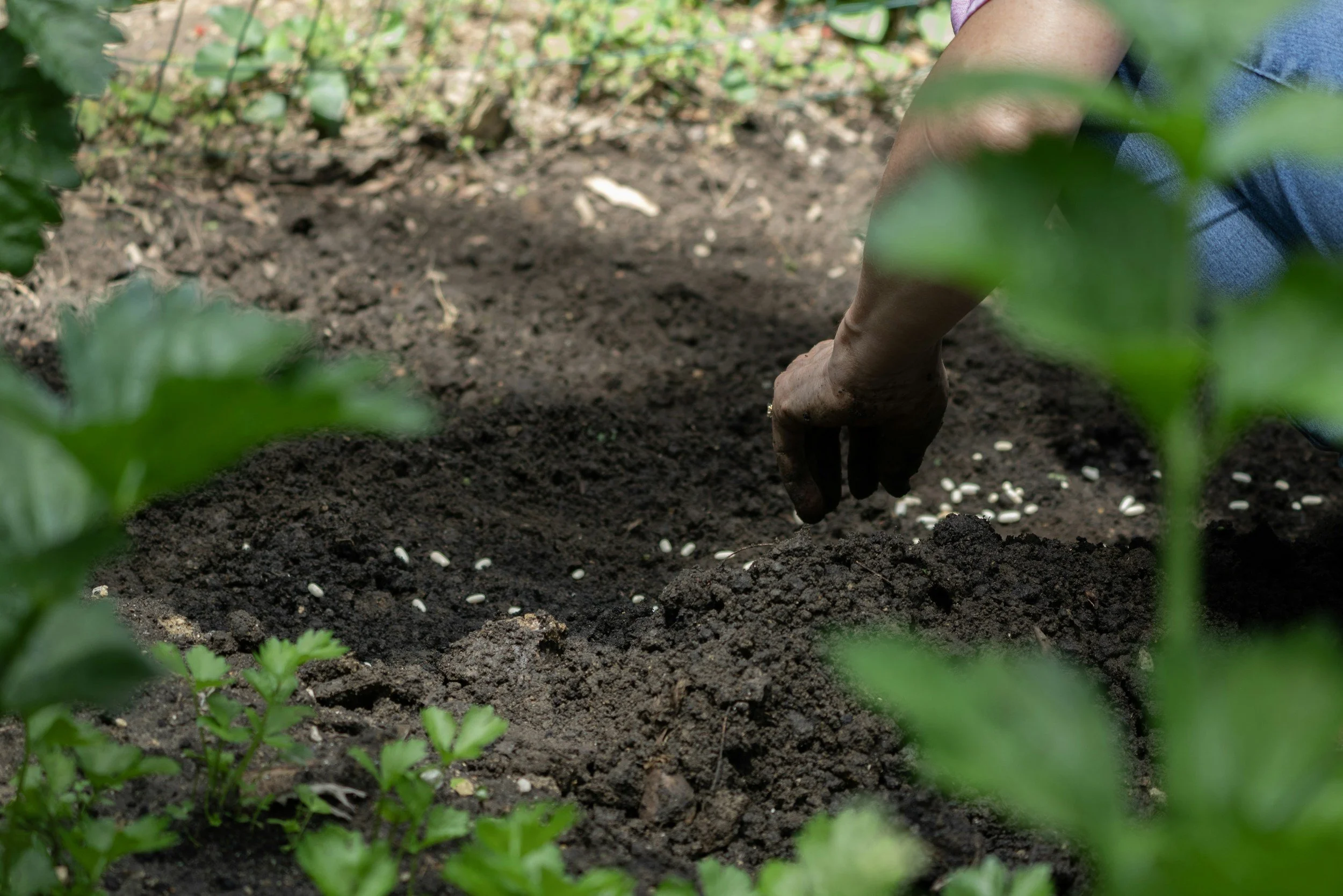Why Your Mattress May be Making You Sick
/Multiple Chemical Sensitivity (MCS): misdiagnosed and poorly understood
Chemical sensitivity affects an unknown number of sufferers worldwide. As I explained in a post that went live on November 27th, chemical sensitivity (also known by other names like multiple chemical sensitivity, idiopathic environmental intolerance, environmental illness, and environmental sensitivity) is the name given to a chronic medical condition in which the sufferer becomes sick or experiences one or more allergy-like reactions after being exposed to toxic chemicals at doses that have generally been deemed safe for humans.
Organizations now exist to help MCS sufferers find a physician who is experienced in diagnosing and treating this condition. However, there has generally been little support from doctors for patients who are suffering from the effects of their exposure to toxic chemicals. As the story of Anna[i], a woman I interviewed last September will show, MCS is poorly understood within the medical community, and it can take a sufferer months or years to figure out what is causing her ill health.
Anna’s battle with MCS: a long journey to relief
Anna suffered for 3 years before finally figuring out the reasons for her debilitating symptoms. I hope that by reading about her ordeal, you may be better equipped to find out whether your own unexplained illness could be a result of chemical sensitivity. Alternatively, you can share this post with someone who has been suffering, without an explanation as to why.
Anna purchased a memory foam mattress after having used a regular spring mattress for years. A couple of months after she began sleeping on the new mattress, she noticed a number of unusual changes in her body temperature, which fluctuated between overheating at night and feeling cold in the morning. At the same time, she began waking up during the night, and had difficulty going back to sleep. Afterwards, she became ultra-sensitive to most materials: cotton, wool, or any other fabric would irritate her skin, and she had to switch to wearing silk clothes for relief. Later, her symptoms became worse: she couldn’t stand to be around fragrances, including those found in most shower soaps; her skin burned and itched for most of the day; her skin problems intensified and then worsened. After a year, she developed a rash, and her hot/cold flashes became worse.
All this time, most of the physicians she visited were of little help. Anna’s General Practitioner (GP) initially linked her skin condition to dryness and suggested that she use a moisturizer. After a year, she was told that she had sun sensitivity and should stay out of the sun. Then she asked to see a dermatologist, and was forced to see one privately after NHS (the health care system in the UK) denied her request. This dermatologist listened to Anna’s explanation of her symptoms, her belief that she had some kind of chemical sensitivity, and felt that it was likely that she had an allergy to something. However, the dermatologist couldn’t pinpoint anything or test her for every possible allergen.
Anna affirmed that she was having some kind of reaction to her environment when she went away on holiday. Her symptoms disappeared and only returned after she returned home.
Like many MCS sufferers, Anna’s symptoms became progressively worse over time: she had asthma attacks for the first time in her life and came down with colds and flu frequently. After two years, she experienced severe night sweats; pain in her chest, ribs, and wrists; insomnia that lasted for 6 hours every night; and a pronounced sensitivity to sounds and smells. Later, she developed neuropathy.
Depressed and frustrated with the lack of answers, she made a major change to her lifestyle and decided to go green. Anna discarded the personal care and household cleaning products she had been using. Her headaches and asthma attacks disappeared almost immediately, and her skin irritation improved, but the other symptoms remained and even worsened as she approached the third year of her illness.
Doctors were still baffled. Initially, her bloodwork came back negative or borderline. To compound the problem, most of the doctors Anna consulted ignored her suggestions that she had developed sensitivity to chemicals. As is common in medical practice (even among many “alternative medicine” practitioners), the physicians’ methods focused almost entirely on treating the symptoms of her illness, rather than searching for the underlying cause. Specialists diagnosed her, at turns, with early onset menopause, thyroid malfunction, and adrenal gland disorder, and when her red and white blood cell count began to decline significantly, a hematologist diagnosed her with monomac.
Monomac is a rare genetic mutation, discovered in 2010, that affects the immune system. Of the 28 people worldwide who have been afflicted by this disease, almost 50% of them died by the age of 35, and none are expected to live to old age. It is passed on by one or both parents who possess the mutation. Anna’s explanation that both her parents were healthy seniors in their 70s made no difference to the hematologist who insisted on testing her for the disease.
Ironically, this physician gave her the impetus to make the change that would ultimately cure her. After the tests for monomac came back negative, he began to listen to her. When Anna explained that the only thing in her house that she had not changed to an eco-friendly variant was her memory foam mattress, he encouraged her to get rid of it, which she did, switching to an organic mattress that she made herself for less than £100.
Within a week, the pain in her chest and ribs disappeared. These were the areas that she had been sleeping on at night. Later on, her neuropathy, frequent colds and flu, night sweats, body pains, and skin sensitivities went away. She slept through the night and reclaimed her life, after 3 years of suffering.
Anna’s story is alarming but not unique. Maybe you have also experienced a sudden onset of symptoms similar to one or more of these. Maybe you already made the connection to toxic chemicals and switched to greener products in your home. However, your mattress contains numerous toxic chemicals, such as toxic flame retardants, that may cause you to experience symptoms of varying intensity. This is especially true if it is made of memory foam. Toxins are out-gassed from the mattress (this refers to the process of releasing toxic VOCs, volatile organic compounds). They are absorbed by your body, with absorption increasing over time.
What can you do if you suspect that your mattress may be making you sick?
First, if you are unwilling or unable to get rid of your mattress you can try using a polyethylene plastic cover to help block some of the off-gassing. Regular mattress covers won’t do this, nor will using a thick organic mattress pad. Off-gassing of toxic chemicals takes about 7 years from the time a mattress is manufactured. Jane Sheppard has written an informative article for Healthy Child that can help you learn more about preventing off-gassing when you can’t afford to buy an organic mattress.
Alternatively, you can purchase an organic mattress. There are pros and cons to this: while an organic mattress will not contain the cocktail of chemicals that ordinary mattresses do, they are expensive and (usually) not comfortable to sleep on.
Or, you can do what Anna did and make your own mattress using organic cotton canvas and organic buckwheat and twisting the pieces together[ii]. Learn how to do this here.
Finally, as I have said in so many posts, you should use the powers of your voice and your wallet to persuade politicians and manufacturers to stop allowing the sale of memory foam mattresses that contain flame retardants and other toxic chemicals. Visit the Safer Chemicals Healthy Families website and sign on to their “Mind the Store” campaign to get started.
*******************************************************************************************
[i] a pseudonym
[ii] if you can’t see a photo of the organic buckwheat mattress here, visit our Facebook page: www.facebook.com/greenandprosperous
Like this? Please pin!






































